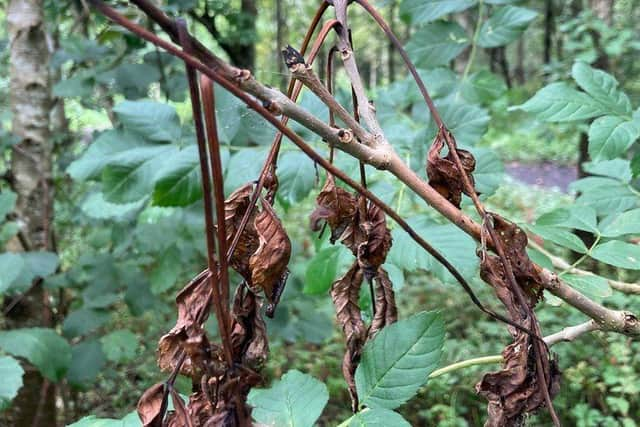Ash dieback: the carnage continues
and live on Freeview channel 276
“Not every tree will die, but the vast majority will,” he added: “Meanwhile farmers and land owners will be left with the problem of best managing the diseased trees that are on their properties.
“Older trees represent a clear health and safety risk to members of farm families and the general public.”
Advertisement
Advertisement
Gardner went on to point out that heavy branches are already dropping from diseased trees at a range of locations across Northern Ireland.


“This is happening without warning. Most roadside hedgerows in those part of the world contain mature ash trees. The possibility of heavy branches falling on to pavements and roads represents a real threat to the general public.
“We can expect the usual quota of storms coming our way over the coming winter months. The bottom line is that diseased ash trees represent a genuine health and safety risk, one that must be actively addressed.”
Gardner wants to see clear guidance given to farmers and landowners on these matters, particularly from an insurance perspective.
Advertisement
Advertisement
He also wants to see clear guidance given from both the PSNI and local councils to contractors who have been given the job of felling road side trees.
“This work will require specific roads to be blocked from both directions while the felling operations take place,” he said.
UFU policy watch officer Hazel Morrell has highlighted the threat now posed by Ash dieback.
She explained: “Farmers are concerned about trees on their own land, but they also have a responsibility to deal with trees along the roadside, footpaths or other public areas.
Advertisement
Advertisement
“The legal position is that the owner of the land where a tree stands is responsible for the health and safety of those who could be affected by that tree.
“Liabilities can arise if trees or branches fall. The risk of an accident occurring increases as ash dieback weakens the tree and as we enter into wintery weather.”
Turn to page 3.
It is important that landowners can recognise the symptoms of ash dieback and other diseases, so they can deal with trees which pose a risk.
“It can be more difficult to identify trees infected with ash dieback at this time of the year as most trees have lost all their leaves by this stage in the season. Other symptoms to look out for are diamond shaped dark lesions where branches meet the trunk and brownish/grey bark under lesions.”
Advertisement
Advertisement
Morrell continued: “Landowners should seek to identify infected trees and have them removed if they are a hazard. The Forest Service administers felling licence applications through its felling licence branch, is also available to assist with queries and advice. Applications are assessed against legal requirements, forestry standards and best practice guidance.
“A licence lasts at least five years. However, felling trees does not always require a licence.”
The Police Service of Northern Ireland (PSNI) can close roads, in order to facilitate tree felling. Superintendent Johnston McDowell is the district commander for Ards and North Down and rural crime lead.
He explained that landowners must contact the Department of Infrastructure and register their request. The PSNI is subsequently notified of this development.